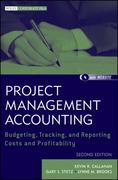| Question 4.4.On March 1, 2012, Freeze Company hires a new employee who will start to work on March 6. The employee will be paid on the last day of each month. Should a journal entry be made on March 6? Why or why not? (Points : 1) |
Yes, the company is now obligated to pay the employee, thus that event must be recorded. No, hiring an employee is an important event; however, it is not an economic event that should be recorded. Yes, failure to record the event would cause the financial statements to be misleading. No, the financial position of the company has been changed; however, the dollar amount of the transaction is not yet known. |






